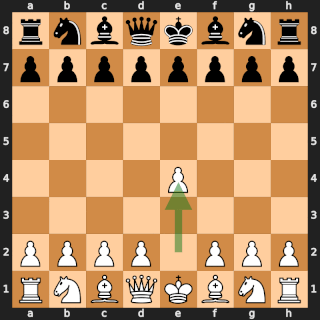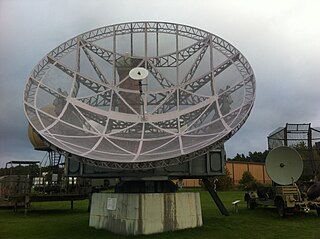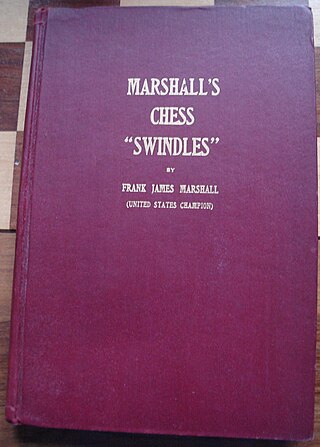
Karl Ferdinand Braun was a German electrical engineer, inventor, physicist and Nobel laureate in physics. Braun contributed significantly to the development of radio and television technology: he shared the 1909 Nobel Prize in Physics with Guglielmo Marconi "for their contributions to the development of wireless telegraphy", was a founder of Telefunken, one of the pioneering communications and television companies, and has been both called the "father of television" and the co-father of the radio telegraphy, together with Marconi.

In telecommunication, especially radio communication, spread spectrum are techniques by which a signal generated with a particular bandwidth is deliberately spread in the frequency domain over a wider frequency band. Spread-spectrum techniques are used for the establishment of secure communications, increasing resistance to natural interference, noise, and jamming, to prevent detection, to limit power flux density, and to enable multiple-access communications.
This glossary of chess problems explains commonly used terms in chess problems, in alphabetical order. For a list of unorthodox pieces used in chess problems, see Fairy chess piece; for a list of terms used in chess is general, see Glossary of chess; for a list of chess-related games, see List of chess variants.

Henry Ernest Atkins was a British chess master who is best known for his unparalleled record of winning the British Chess Championship nine times in eleven attempts. He won every year from 1905 to 1911, and again in 1924 and 1925. A schoolmaster, Atkins treated chess as a hobby, devoting relatively little time to it and playing in only a handful of international tournaments. He was an extremely gifted player who would likely have become one of the world's leading players had he pursued the game more single-mindedly. FIDE, the World Chess Federation, awarded him the International Master title in 1950 in recognition of his past achievements.

The Opera Game was an 1858 chess game, played at an opera house in Paris. The American master Paul Morphy played against two strong amateurs: the German noble Karl II, Duke of Brunswick, and the French aristocrat Comte Isouard de Vauvenargues. It was played as a consultation game, with Duke Karl and Count Isouard jointly deciding each move for the black pieces, while Morphy controlled the white pieces by himself. The game was played in a box while an opera was performed on stage. Morphy quickly checkmated his opponents following rapid development of material, involving a queen sacrifice.
In chess, a back-rank checkmate is a checkmate delivered by a rook or queen along the opponent's back rank in which the mated king is unable to move up the board because the king is blocked by friendly pieces on the second rank.
Telefunken was a German radio and television producer, founded in Berlin in 1903 as a joint venture between Siemens & Halske and the Allgemeine Elektrizitäts-Gesellschaft (AEG).

The low-UHF band Würzburg radar was the primary ground-based tracking radar for the Wehrmacht's Luftwaffe and Kriegsmarine during World War II. Initial development took place before the war and the apparatus entered service in 1940. Eventually, over 4,000 Würzburgs of various models were produced. It took its name from the city of Würzburg.
Hans Erich (Eric) Hollmann was a German electronic specialist who made several breakthroughs in the development of radar.

David Navara is a Czech chess grandmaster, the highest-ranked of his country. Awarded the title of Grandmaster by FIDE in 2002, he is a 12-time national champion.
A joke chess problem is a puzzle in chess that uses humor as a primary or secondary element. Although most chess problems, like other creative forms, are appreciated for serious artistic themes, joke chess problems are enjoyed for some twist. In some cases the composer plays a trick to prevent a solver from succeeding with typical analysis. In other cases, the humor derives from an unusual final position. Unlike in ordinary chess puzzles, joke problems can involve a solution which violates the inner logic or rules of the game.
A seriesmover is a chess problem in which one side makes a series of legal moves without reply at the end of which the other side makes a single move, giving checkmate or yielding stalemate, depending on the precise stipulation. Checks cannot be given except on the last move of the series. There are various types of seriesmover:

In chess, a swindle is a ruse by which a player in a losing position tricks their opponent and thereby achieves a win or draw instead of the expected loss. It may also refer more generally to obtaining a win or draw from a clearly losing position. I. A. Horowitz and Fred Reinfeld distinguish among "traps", "pitfalls", and "swindles". In their terminology, a "trap" refers to a situation where players go wrong through their own efforts. In a "pitfall", the beneficiary of the pitfall plays an active role, creating a situation where a plausible move by the opponent will turn out badly. A "swindle" is a pitfall adopted by a player who has a clearly lost game. Horowitz and Reinfeld observe that swindles, "though ignored in virtually all chess books", "play an enormously important role in over-the-board chess, and decide the fate of countless games".
441-line is the number of scan lines in some early electronic monochrome analog television systems. Systems with this number of lines were used with 25 interlaced frames per second in France from 1937 to 1956, Germany from 1939 to 1943, Italy from 1939 to 1940, as well as by RCA in the United States with 30 interlaced frames per second from 1938 to 1941. Broadcasts were planned in Finland for 1940, but eventually cancelled due to World War II. Some experiments with similar systems were carried out on the USSR in the 1930s and Japan in 1939.

Electronics and Computer Science, generally abbreviated "ECS", at the University of Southampton was founded in 1946 by Professor Erich Zepler. It offers 23 undergraduate courses, 11 MSc intensive one-year taught programmes and PhD research opportunities.
Wilhelm Tolmé Runge was an electrical engineer and physicist who had a major involvement in developing radar systems in Germany.
Radar in World War II greatly influenced many important aspects of the conflict. This revolutionary new technology of radio-based detection and tracking was used by both the Allies and Axis powers in World War II, which had evolved independently in a number of nations during the mid 1930s. At the outbreak of war in September 1939, both the United Kingdom and Germany had functioning radar systems. In the UK, it was called RDF, Range and Direction Finding, while in Germany the name Funkmeß (radio-measuring) was used, with apparatuses called Funkmessgerät . By the time of the Battle of Britain in mid-1940, the Royal Air Force (RAF) had fully integrated RDF as part of the national air defence.
Otto Griessing was a German electronics engineer. He became known following his design of the so-called Volksempfänger, one of the sets on display at the 10th German Radio Show in August 1933. He designed the receiver at the request of Joseph Goebbels, the German Propaganda Minister. More Volksempfängers were manufactured in Germany between 1933 and 1945 than any other model. The budget-priced Deutsche Kleinempfänger was also widely known as the Volksempfänger.

The FuG 200 Hohentwiel was a low-UHF band frequency maritime patrol radar system of the Luftwaffe in World War II. It was developed by C. Lorenz AG of Berlin starting in 1938 under the code name "Hohentwiel", an extinct volcano in the region of Baden-Württemberg in southern Germany.
Dietrich Gunther Prinz was a computer science pioneer, notable for his work on early British computers at Ferranti, and in particular for developing the first limited chess program in 1951.










